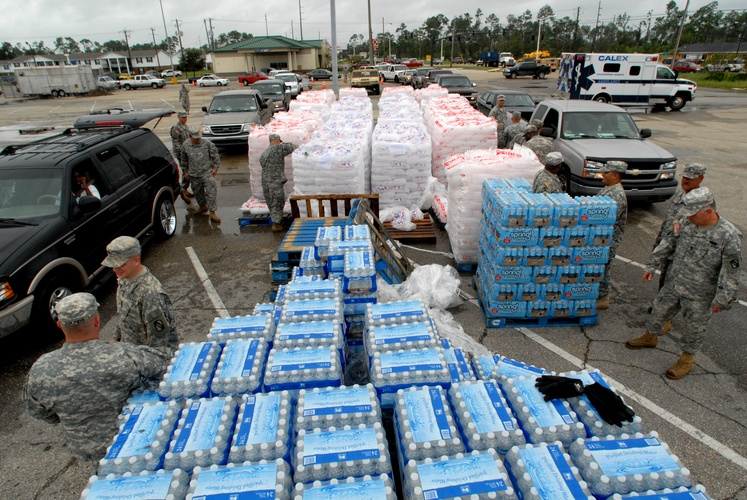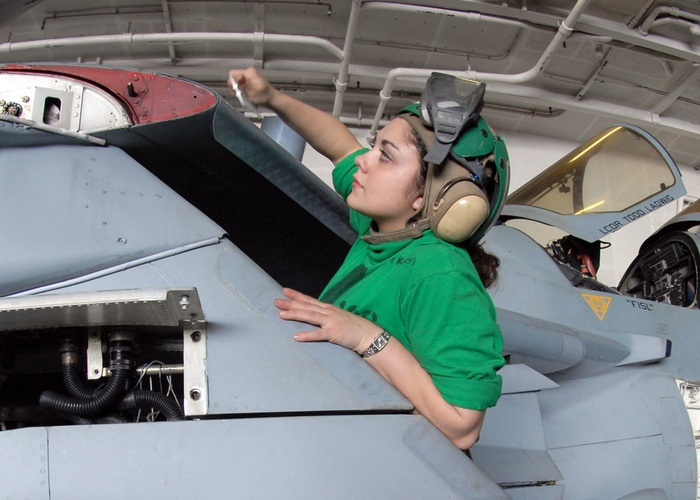Operational Support Airlift Agency, JOSAC, and The UC-35: Who Are They, And What Do They Do?
One of the best-kept secrets in the military aviation community is the small flying units that operate fixed-wing business-class aircraft. These units are sprinkled all over the country, with the Reserve and National Guard components making up a large percentage of the operators. There is a handful of aircraft used by OSAA and JOSAC, but the C-12 Huron and the UC-35 Citation fly the bulk of missions.
Today, we’re going to focus on who JOSAC is, what OSAA is and what they do, and how they successfully use the UC-35 for passenger movements. Let’s dive in!
What Is The Joint Operational Support Airlift Center (JOSAC)?
United States Transportation Command's (USTRANSCOM) airlift division is known as the Joint Operational Support Airlift Center (JOSAC). Within the continental United States, airlift is JOSAC's area of expertise. Aircraft assigned to the U.S. Army National Guard, Army Reserves, U.S. Marine Corps, and Air National Guard and Reserve are scheduled by JOSAC.

This is an important distinction: JOSAC is not an owning or operating agency like Air Mobility Command. JOSAC is a scheduling agency. See, there are a few hundred aircraft spread out all across the U.S. In fact, every single state has at least one fixed-wing asset assigned to their state National Guard aviation units.
While these aircraft are assigned to the individual state, JOSAC is the agency responsible for dispatching and scheduling them.
The aircraft scheduled by JOSAC are not solely National Guard or Reserve aircraft; there are still a lot of fixed-wing aircraft in the active duty. And not just the active duty Army, either. JOSAC is a joint-force agency that schedules aircraft owned by:
- The U.S. Army
- US Marine Corps
- US Navy
- US Air Force
What Aircraft Does JOSAC Fly?
Located at Scott AFB in Illinois, which is home to Air Mobility Command, JOSAC is a subsidiary of the US Transportation Commander (USTRANSCOM). JOSAC is the scheduling agency for around 80 separate units that provide airlift capability. Think about the logistics of requesting units trying to get access to the airlift assets without a central coordinating unit; it would be a total disaster.
But here’s the thing: JOSAC itself does not fly any aircraft of any kind. They are a middle-man agency. The aircraft are all assigned to various flying squadrons and units.
How Many UC-35 Citation Ultras Does JOSAC Have?
So, JOSAC itself has zero UC-35s because they have no aircraft of any kind. But under the purview of JOSAC, there are quite a few UC-35s across the CONUS (JOSAC only schedules CONUS missions).

- The Army maintains a fleet of 27 UC-35 aircraft, which is about ten percent the size of its C-12 Huron fleet.
- The Navy operates a fleet of ten UC-35D model jets.
- The USMC also operates ten UC-35D Citations.
- The USAF does not operate any UC-35s of any model. The most comparably sized aircraft in the USAF fleet is the Lear C-21, which has been in service since 1984.
What Is the Operational Support Airlift Agency?
Okay, enough about JOSAC. Let’s talk about what the Operational Support Airlift Agency is and how they use the UC-35 to conduct missions. OSAA uses fixed-wing utility aircraft, generally commercial off-the-shelf civil aircraft, as military aircraft, and the Citation Ultra perfectly fits executive transport's role.
One of the first multi-component operational commands in the Army was created when the Operational Support Airlift Agency (OSAA) and its operational subordinate entity, the Operational Support Airlift Command (OSACOM), combined the fixed-wing aircraft and personnel of the Active Component and the Army National Guard.
OSA missions vary somewhat, but generally speaking, they are dialed into hauling passengers who are high in the Department of Defense. Each detachment has anywhere from one to several aircraft, and the headquarters is located at Fort Belvoir, Virginia.
What Does the Operational Support Airlift Agency Do?
Unlike JOSAC, which focuses on scheduling missions in the CONUS, OSAA is responsible for a host of CONUS and OCONUS missions.
So, the bulk of the OSA assets reside in the ARNG, which makes perfect sense. There are detachments in all 50 states and in two territories. Over 40% of all Army fixed-wing aviators are employed by the Army National Guard's fifty-two OSACOM OSA Flight Detachments, which are the most adaptable fixed-wing OSA forces for international, governmental, and state employment.
The OSACOM Flight Detachments continue to be the most adaptable, available, and reasonably priced OSA force in the Army, capable of carrying out operations in a Title 10, Title 32, or State Active Duty posture.
The overall mission is managed through four active-duty Regional Flight Centers. These flight centers make up about ten percent of the Army's overall active-duty fixed-wing aviation personnel, so they are a significant slice of the pie.
A Closer Look at the Responsibilities and Mission of the Operational Support Airlift Agency
When you are talking about an agency with a purview the size of OSA (52 detachments plus four Regional Centers), you are looking at a lot of logistical issues, let alone tactical and strategic ones.

OSAA is an adaptable organization that offers Army and DoD scalable and defined fixed-wing aviation assistance. Over the past couple of decades of ongoing hostilities, the Army and the joint services received a depth of fixed-wing resources from OSAA.
This includes airlift for operational support as well as assistance with emergent needs of the combatant commander, including intelligence, surveillance, and reconnaissance (ISR).
This degree of expandability for fixed-wing requirements is the direct outcome of a force structure carefully built with peacetime and combat requirements in mind.
This involves the development of strategy and doctrine, along with standardized training systems across the organization.
What Is the Mission of the UC-35?
So, what is the mission of the UC-35? Well, it is a utility category aircraft that is operated to service a few different core missions, although executive transport is the primary purpose for these business jets.
The UC-35 has some capacity for cargo, although not to the same extent as the C-12 Huron, which has been modified with a cargo door on some models. However, if critical items need to move fast (i.e., medical, organs, or other relatively small items), the UC-35 is a natural choice for cargo. But at the end of the day, it is best suited for passenger movements, particularly when added range is needed, or especially in the AOR when you want to cruise much higher to stay well clear of any threats.
Greenwood Aerospace Is Your Trusted Partner For All Things UC-35
Keeping the UC-35 running like a well-oiled machine is a full-time job. It is a tough and reliable jet, but all aircraft require regular maintenance to stay at their best. If you are ready to level up your parts supply, then Greenwood Aerospace is the team player you are looking for. We’ve been in the industry for a long time and have formed lasting relationships with key partners in the UC-35 community.
Greenwood Aerospace proudly assists and supplies all branches of the U.S. military, as well as many government agencies and major defense contractors, to ensure operational readiness and mission success. Our experts work hard to ensure your fleet remains at peak performance, receiving parts and supplies when needed and within your budget.


.svg)


.png)


